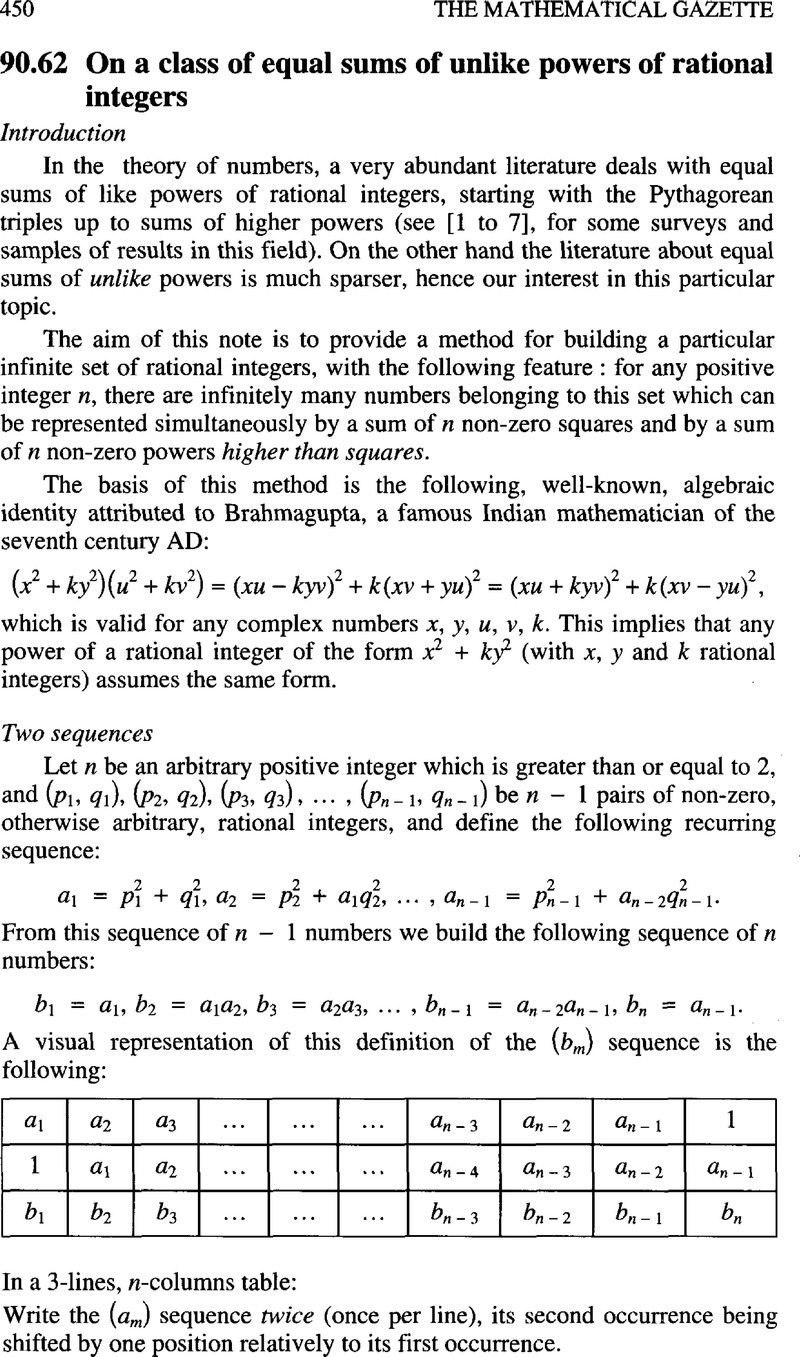No CrossRef data available.
Article contents
90.62 On a class of equal sums of unlike powers of rational integers
Published online by Cambridge University Press: 01 August 2016
Abstract
An abstract is not available for this content so a preview has been provided. Please use the Get access link above for information on how to access this content.

- Type
- Notes
- Information
- Copyright
- Copyright © The Mathematical Association 2006
References
2.
Dickson, L.E., History of the theory of numbers (Vol 2 : Diophantine analysis) Chelsea, New York (1966).Google Scholar
3.
Lander, L.J., Parkin, T.R. and Selfridge, J.L., A survey of equal sums of like powers, Math. Comput. 21 (1967) pp. 446–459.Google Scholar
4.
Ekl, R.L., New results in equal sums of like powers. Math. Comput. 67 (1998) pp. 1309–1315.Google Scholar
5.
Guy, R.K., Sums of like powers. Euler’s conjecture, in Unsolved problems in number theory (2nd edn.) Springer-Verlag (1994) pp. 139–144.Google Scholar
6.
Resta, G. and Meyrignac, J.-C., The smallest solutions to the Diophantine equation x
6 + y
6 = a
6 + b
6 + c
6 + d
6 + e
6
, Math. Comput. 72 (2003) pp. 1051–1054.Google Scholar
7.
Meyrignac, J.-C., Computing minimal equal sums of like powers, http://euler.free.fr
Google Scholar
8.
Lander, L.J., Equal sums of unlike powers, Fibonacci Quarterly
28.2 (1990) pp. 141–150.Google Scholar
9.
Davenport, H., The higher arithmetic (5th edn), Cambridge University Press (1982) pp. 124–126.Google Scholar
10.
Jacobi, C.G.J., Démonstration élémentaire d’une formule analytique remarquable, Journal des Mathématiques Pures et Appliquées (mai 1842) pp. 85–109 (in French).Google Scholar


